
How blockchain technology is changing treasury

Blockchain: Separating hype from substance

Commercial real estate in 2020: Keeping up with the pace of change

The AI journey in finance: How to make it part of your strategy

3 emerging technology trends for bankers

The startup scene in Reno: The story of Breadware

The startup scene in Reno: Emerging tech leads the way

Finance or operating lease? Deciphering the legalese of equipment finance

Common pitfalls to avoid in the equipment financing process

Buying or leasing? Questions to ask before signing a contract

The secret to successful service provider integration

Webinar: Cash management strategies for higher education

Colleges respond to student needs by offering digital payments

Integrated receivables management solution supports customer focus at MSC Industrial Supply

Improve government payments with electronic billing platforms

Tactical Treasury: Fraud prevention is a never-ending task

Post-pandemic fraud prevention lessons for local governments
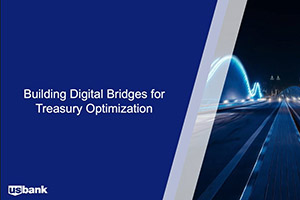
Webinar: Building digital bridges for treasury optimization
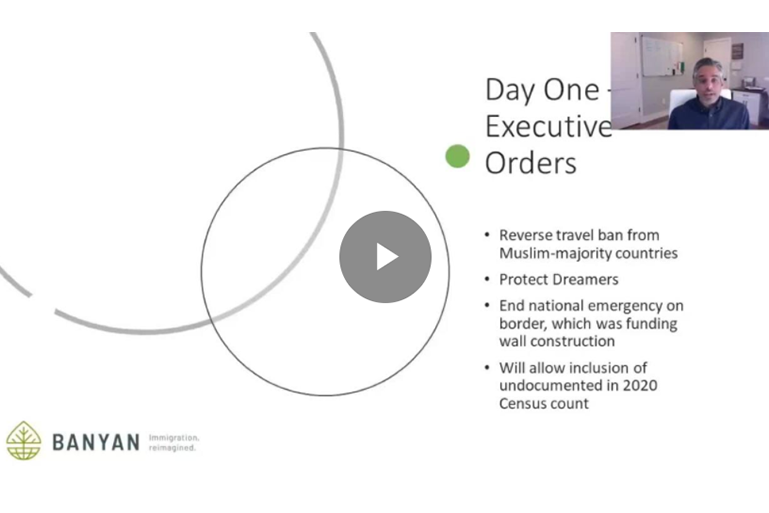
Webinar: Key issues impacting relocation in 2021
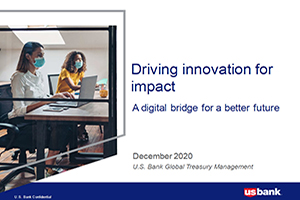
Webinar: Driving innovation to impact treasury management

Webinar: Economic, political and policy insights
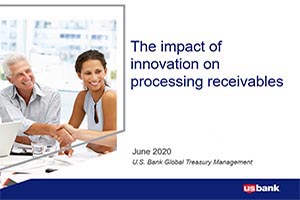
Webinar: The impact of innovation on processing receivables

The cyber insurance question: Additional protection beyond prevention

Government agency credit card programs and PCI compliance

Drive digital transformation with payments innovation

Beyond the back office: real-time payments

Leading the way for real-time payments

Real-time payments fuel innovation

Real-time answers about real-time payments

Looking like a million bucks: The business case for high-value real-time payment

Modernizing fare payment without leaving any riders behind

Access, flexibility and simplicity: How governments can modernize payments to help their citizens

Role of complementary new channels in your payments strategy

Navigate changing consumer behavior with service fees
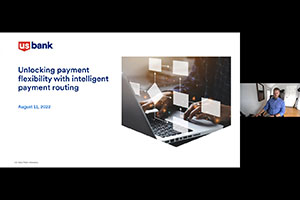
Unlocking payment flexibility with intelligent payment routing

How electronic billing platforms improve government payments

What government officials should know about real-time payments

Higher education strategies for e-payment migration, fighting fraud

Tap-to-pay: Modernizing fare payments pays off for transit agencies and riders

ABCs of APIs: Drive treasury efficiency with real-time connectivity

How emerging banking solutions enable better decisions

Want AP automation to pay both businesses and consumers?

Time is money: Intelligent Payment Routing saves businesses both

Digital trends poised to reshape hotel payments

Managing the rising costs of payment acceptance with service fees

Digital banking for business: How connectivity improves customer experience

Banking connectivity: Helping businesses deliver the easier, faster, more secure customer experience of the future

Enhancing the patient experience through people-centered payments

Unexpected cost savings may be hiding in your payment strategy

Crack the SWIFT code for sending international wires

Automate escheatment for accounts payable to save time and money

ePOS cash register training tips and tricks

Cashless business pros and cons: Should you make the switch?

Automate accounts payable to optimize revenue and payments

A simple guide to set up your online ordering restaurant

What to know when investing in AP automation solutions

Ways prepaid cards disburse government funds to the unbanked

How to accept credit card payments without transaction fees

3 reasons governments and educational institutions should implement service fees

The benefits of payment digitization: Pushing for simplicity

Collect utility and telecom bill payments faster

Government billing survey: The digital transformation of the payment experience

Zelle® helps Sunriver Resort make payments efficient and secure

3 ways to make practical use of real-time payments

How AI in treasury management is transforming finance

Instant Payments: Accelerating treasury disruption

Can faster payments mean better payments?

Empowering managers with data automation and integration

4 ways Request for Payments (RfP) changes consumer bill pay

Digital Onboarding helps finance firm’s clients build communities

Innovative payroll solutions may help attract hourly workers

Flexibility remains essential for public sector workforces

Tailor Ridge eBill case study

What corporate treasurers need to know about Virtual Account Management

ABCs of ARP: Answers to American Rescue Plan questions for counties

Treasury management innovations earn Model Bank awards

How to redefine challenges with business collaboration

Why ecommerce for small business strategy is integral

Rethinking common time management tips

How running a business that aligns with core values is paying off

Meet the Milwaukee businessman behind Funky Fresh Spring Rolls

3 ways to gain loyalty with your customers

Tips for navigating a medical hardship when you’re unable to work

3 awkward situations Zelle can help avoid

How voice-activated devices work with banks


